Introduction
Many native plants used in home and commercial landscapes help conserve water and provide habitat for native pollinators such as bees, birds and butterflies. Although this work was completed in Utah, the plants studied are also native to Nevada and are fully hardy to our high-desert climate. Purchasing native plants from local growers supports the local economy and enhances rangeland restoration efforts in Nevada's Great Basin ecoregion.
This work was supported by a grant from the U.S. Forest Service through a sub-award from the Great Basin Native Plant Selection and Increase Project.
Common garden trials allow us to tease out differences in plant cold-hardiness, drought tolerance and form across seed sources. This has provided us with information that will be useful in identifying appropriate markets for selected species, limits of adaptability for some seed sources and sources of germplasm for possible cultivar development.
Objectives
- Identify, evaluate and select native plant species and varieties that show promise for water and resource conservation in ornamental nursery crop production and in ornamental landscape systems;
- Collect and disseminate information about cold-, heat- and drought tolerance, ease of production and limits of environmental adaptation of evaluated plants to the scientific community, growers, retailers and the public.
Trial locations
- Greenville Farm (North Logan, UT): elevation 4,300 feet, soil loam, USDA zone 4 (northern site)
- Utah Botanical Center (Kaysville, UT): elevation 4,400 feet, soil loam, USDA zone 6 (northern site)
- Kane County Extension (Kanab, UT): elevation 6,500 feet, soil sandy loam, USDA zone 7 (southern site)
- Tonaquint Gardens (St. George, UT): elevation 2,750 feet, soil sandy loam, USDA zone 8 (southern site)
Methods
Seeds were collected from various locations around Utah, representing the range of latitude and elevation for each species. Plants were grown from seed in a greenhouse in north Logan. Seedlings were installed at test plots after their second year of growth. All trial site soils were at or above a pH level of eight. Test plots in north Logan and Kaysville were arranged in a complete block design with five replicates per species. Plots were irrigated only as often as needed to prevent wilting of plants. Irrigation was by a drip system arranged in a grid. No irrigation was provided during the second year of the trials. Natural precipitation during the growing season was insignificant. Pre-emergence herbicide was applied early in spring to control weeds. Trial sites in Kanab and St. George were in public demonstration gardens, arranged to be aesthetically pleasing and managed by city/county employees or master gardeners. Data reported represent two years of observations in the landscape.
Results and descriptions
Cercocarpus ledifolius
(Curlleaf mountain mahogany) (USDA zones 3-8) is a large shrub or small tree that grows up to 12 feet tall and wide and shows a fair degree of variability in form across the region. This is a broadleaf evergreen with long, narrow aromatic leaves and ornamentally attractive fruit that is feather-like and corkscrew in appearance. The species occurs naturally in mountainous areas from 4,000 to 10,000 feet. We found no differences among seed sources intolerance to cold, but plants at all sites exhibited low survival rates without supplemental irrigation in the summer. Plants in St. George survived best in part shade in summer. Plants from seed collected at 7,900 feet in Iron County, Utah were larger than plants from the lower elevation site, and parent plants exhibited a tree form in their native habitat, a trait that may be valuable ornamentally. This accession shows potential for cultivar selection. Recommendations: Plant in well-drained soil in an area with access to irrigation. Seed source should not impact cold-hardiness.
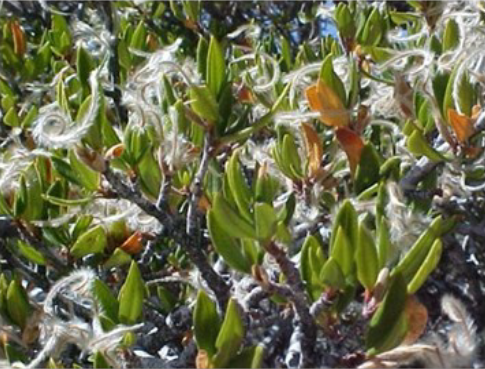
Purshia mexicana
(Cliffrose) (USDA zones 4-7) is a broadleaf evergreen shrub that is more compact in size than mountain mahogany, growing to only 5 feet tall and wide. It has small, dark green, deeply lobed foliage and white honey-scented flowers with yellow centers in early spring. The species occurs across the region at elevations from 2,500 to over 7,000 feet. Of the seed sources we collected, those from sites over 6,000 feet exhibited the greatest winter survival at the northern trial sites. Survival through the summer without irrigation was less than 50 percent at all sites. Recommendations: Plant in well-drained soil in an irrigated area. Plants for northern or high-elevation markets should come from seeds collected at sites with similar cold-hardiness zone ratings.
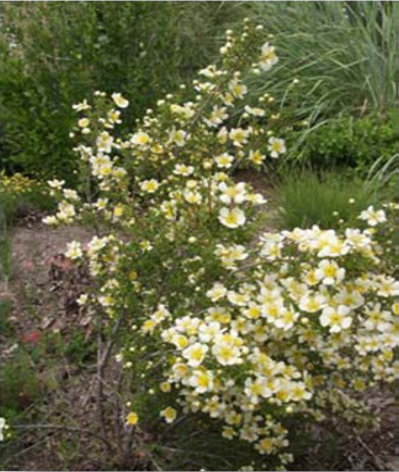
Agastache urticifolia
(Nettleleaf giant hyssop) (USDA zones 3-6) is an aromatic perennial herb that gets up to 4 feet tall and occurs naturally from 5,000 to 10,000 feet in foothill to mountainous areas across the Intermountain West. A member of the mint family, this plant has square stems with oppositely attached leaves and a dense spike of pink to purple flowers up to 3.5 inches long that bloom throughout the summer. We were primarily interested in finding a seed source that would withstand minimal irrigation. During our evaluation, plants from seed sources below 6,000 feet did not survive the heat of the summer, whereas plants from higher elevation seed sources (above 8,000 feet), or those from the northern latitudes of the region, survived and showed no growth differences across the northern trial sites, even without summer irrigation. Plants in St. George did not survive the heat of summer. Recommendations: Most plants of this species will require regular irrigation. Choose plants grown from seed collected at higher elevation or northern latitudes for best heat- and drought tolerance.
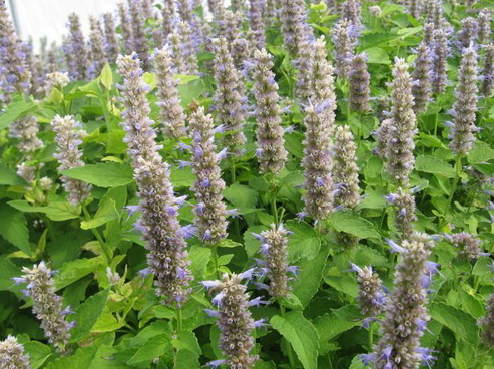
Monardella odoratissima
(Mountain beebalm) (USDA zones 3-8) is a mound-forming perennial with bright purple flowers up to 12 inches tall and a mint aroma that attracts bees and butterflies. It blooms in late summer and occurs naturally across the Intermountain West at elevations from 6,000 to 11,000 feet. Plants from both accessions overwintered successfully at all sites. Only 50 percent of plants survived the summer with minimal irrigation at the northern sites during the second growing season; plants tolerated part shade in St. George. No differences were noted in end-of-season height or width across accessions. We conclude that this species will require regular watering, especially in hot areas or in well-drained soils. Recommendations: Plants require regular water and full sun for best flowering. Plants grown at the southern end of our region may require partial afternoon shade. Site of seed collection should not affect cold-hardiness.
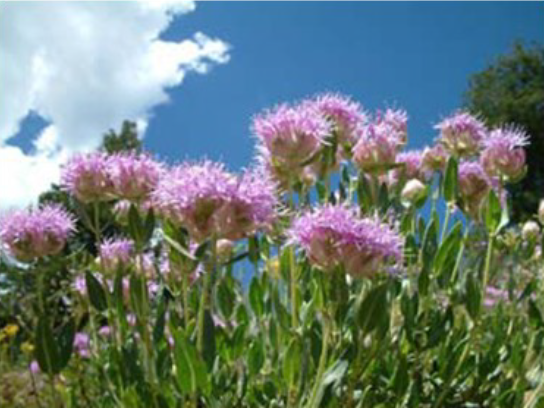
Geranium viscosissimum
(Sticky geranium) (USDA zones 2-7) is a perennial with pink to purple flowers that occur two or three to a cluster at the terminal end of stems. Plants grow up to 2 feet tall and bloom throughout the summer. Unlike most other herbaceous perennials, sticky geranium foliage exhibits a brick-red fall color. This species occurs naturally at higher elevations in the northern part of the Intermountain West at elevations from 5,000 to over 10,000 feet. Our evaluation indicated significant differences in plant growth by the end of the summer at the North Logan site, while no differences were observed in plants grown without irrigation in Kaysville. We presume that drought stress masked growth differences among seed sources at the Kaysville trial site. Similar to mountain beebalm, only 50 percent of plants survived the summer with minimal irrigation. Plants in St. George survived only in shade. Plants from both accessions survived the winter in the two northern locations. Recommendations: Requires regular watering and will tolerate part to full shade. Site of seed collection should not affect cold-hardiness. There may be opportunity to select superior cultivars from populations of this species.

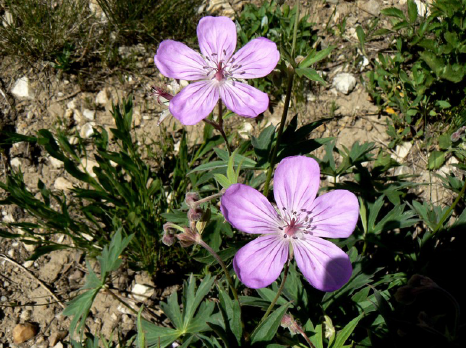
Stanleya pinnata
(Prince’s plume) (USDA zones 4-10) is a 1- to 4-foot tall perennial with a wide mound of coarse foliage at its base and tall plumes of lemon-yellow flowers in summer. It occurs naturally at elevations from 3,000 to 9,000 feet across the region. Occurring naturally in the hottest, driest regions of the state, we were more concerned about the overwintering capacity of plants from different seed sources. We found poor winter survival of plants from southern seed sources when planted at the two northern sites. Plants from one seed source from Iron County, Utah at 6,000 feet exhibited over 80 percent survival overwinter at both northern sites. These plants also exhibited greater summer survival at all sites, and grew larger when they received no irrigation at the northern sites with loamy soils. We suspect this species will not tolerate overwatering or heavy clay soils in an ornamental setting. Plants that survived were in full sun at the southern locations. Recommendations: Plant in well-drained soil in areas that are not regularly irrigated. Requires full sun. Choose plants from seed collected from northernmost latitudes or higher elevations for best cold-hardiness.
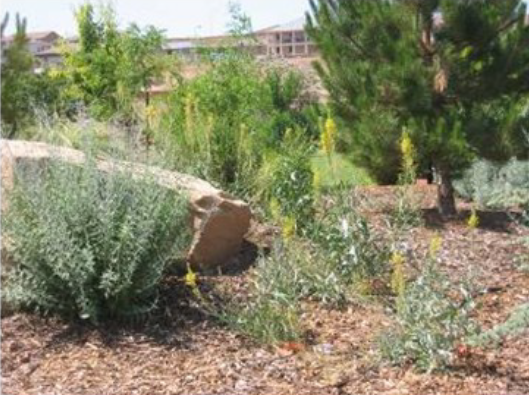
Penstemon eatonii
(Firecracker penstemon) (USDA zone 4-9) is a bright-red-flowered penstemon that has demonstrated wide adaptability to common garden conditions regardless of seed source or trial site. Plants bloomed in early spring and grew 1 to 3 feet tall. Plants overwintered successfully at both northern sites, but those from a lower-elevation accession in Carbon County exhibited better overall survival in the heavier soils of the northern sites. Plants survived both sun and part shade in the two southern sites. The species occurs throughout the north-central and southern part of the Intermountain West at elevations ranging from 2,700 to 11,000 feet. Recommendations: Most penstemon species do best in well-drained soils. Overwatering causes rank growth that flops under its own weight. Seed source should not be an issue with this species, either for growers or for retailers seeking an appropriate market, as there were no differences among accessions in winter-hardiness.
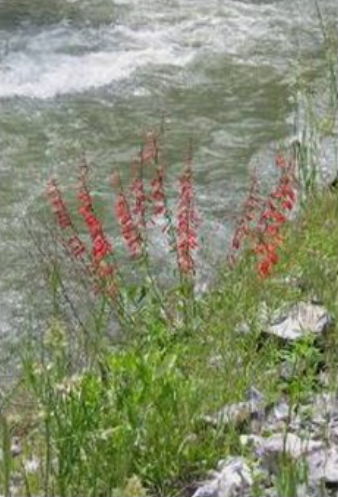
Astragalus filipes
(Basalt milkvetch) (USDA zone 4) is a perennial legume with fine-textured foliage and creamy yellow pea-like flowers that appear in late spring and drape daintily to one side of the 8- to 15-inch upright stems. In late summer, flowers give way to slender pods attached by thin stalks. The species occurs across the Great Basin and as far north as British Columbia at low to mid-elevations. Cold-hardiness of plants in our trials was correlated to seed source, with the hardiest plants originating from north-central Oregon. This accession also exhibited the best summer survival with minimal irrigation. Plants bloomed profusely through spring and early summer. This species was not tested in southern Utah. Recommendations: This species requires no fertilization because it fixes its own nitrogen. It thrives in dry, rocky soils. Overwatering leads to rank growth that flops over late in the season. Will require infrequent watering once established. The species is shade-intolerant.
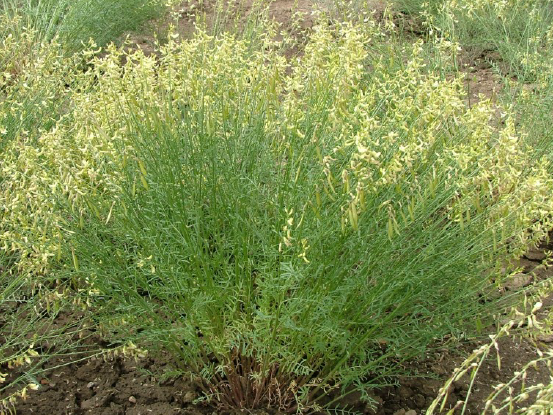
Dalea ornata
(Western prairie clover) (USDA zone 4) is a lavender-purple-flowered perennial legume that grows at elevations from 1,100 to 3,300 feet. Flowers occur in loosely arranged spikes at the terminal ends of 12- to 18-inch flowering stalks. Flowers appeared later than those of basalt milkvetch, but they remained in bloom throughout the summer. Timing of bloom was directly correlated to seed source, with northern accessions starting and ending bloom later than southern accessions. Our seeds were from locations in eastern Oregon. Plants in our trials survived winter cold and summer heat in both northern Utah locations with minimal irrigation. This species was not tested in southern Utah. Recommendations: Select plants from locations that match the intended market for best bloom life. Requires full sun and well-drained, infertile soil for best performance.
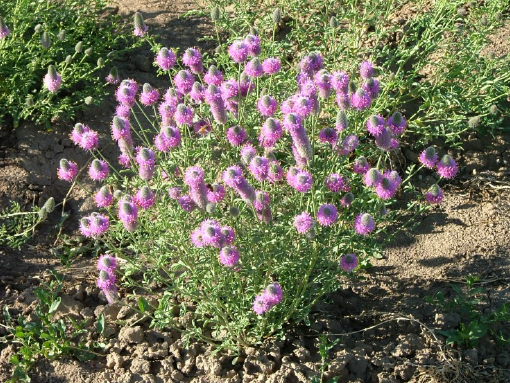
Dalea searlsiae
(Searl’s prairie clover) (USDA zone 4) is similar to western prairie clover but has longer flower spikes (15 to 21 inches long) with tighter blooms. Flowers are rose-purple with bright yellow stamens that protrude from the centers. Like western prairie clover, timing of bloom was directly correlated to seed source. The species is native to the western U.S. in southern Utah, Nevada and northern Arizona at elevations between 4,000 and 6,500 feet. Plants in our trials were heat- and cold-tolerant, but plants from seed collected in northern locations were larger and more vigorous. Plants exhibited nearly 100 percent survival with minimal irrigation. This species was not tested in southern Utah. Recommendations: Searl’s prairie clover fixes its own nitrogen, so it requires no fertilization. Timing of bloom is dependent on seed source, so plants should be selected from seed-source locations that match the intended market. This species performs best in well-drained rocky or sandy soils. Requires full sun and little to no irrigation once established.
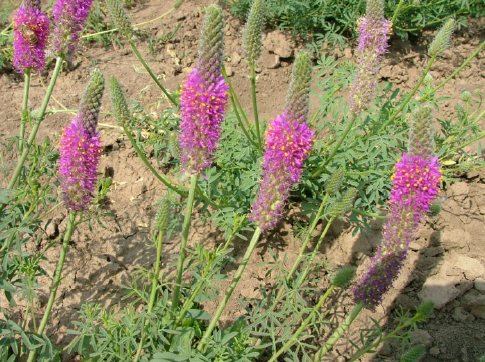
References
- Albee, B.J., L.M. Shultz, and S. Goodrich. 1988. Atlas of the Vascular Plants of Utah. Occasional Publication 7. Utah Museum of Natural History, Salt Lake City.
- Kratsch, H.A. 2009. Evaluating Intraspecies Diversity of Intermountain West Native Plants. Report of the Native Plants Cooperative Vol. 1 (December), 4pp.
- Mee, W., J. Barnes, R. Kjelgren, R. Sutton, T. Cerny, and C. Johnson. 2003. Waterwise Native Plants for Intermountain Landscapes. Utah State University Press, Logan, UT.
Kratsch H.
2011,
Some Good Native Plants for Great Basin Landscapes,
Extension | University of Nevada, Reno, FS-11-13


